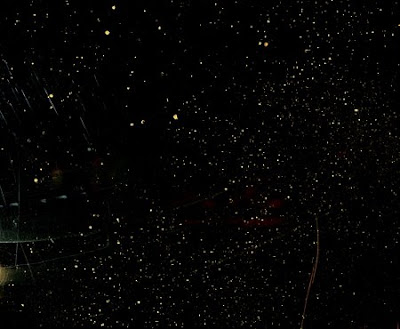
Monday, 3 November 2008
Sunday, 26 October 2008
Thursday, 21 August 2008
Katie Lunnon - 'Evelyn Florence'
This project reflects upon the power of an inanimate object to carry memories throughout and beyond its existence and how, when even after its destruction, its memories continue and remain strong.



Although an individual may pass away, the objects associated with them remain forever a trace of their life. The objects are isolated against a white background creating a metaphor for the conditions in which my great grandmother isolated herself for 15 years in her flat as she became ill, infirm and immobile.
Now in the process of dying, her objects have been removed, destroyed or disappeared during the clearance of her home which is to be sold to fund nursing home care.
The memories attached to these salvaged objects will never fade, will always hold strong enduring reminders of her life. Memories will replace what is destroyed and thrown away.

Ruler - 1939, 'My Father was a Master Builder. He trained as a carpenter/joiner and worked in London as a Quantity Surveyor for many years. In his 40s, when he had enough experience and contacts he started his own building company and became a Master Builder, building many houses in Twickenham. These houses are still standing and lived into this day, evidence of true quality craftsmanship. Note the imperial, not metric, measurements used during his career and era'. - Evelyn Florence

Brush - 1950, 'Father kept this brush in the hall stand of our family home in Strawberry Hill Twickenham. It was neatly tucked away after every use in the hall-stand drawer. My father used it to brush his hair specifically over to the right hand side, meticulously, every time before he left the house. He would stare into the hall mirror over the wooden chest. - Evelyn Florence

Coupons - 1956, 'This ration book belonged to my husband and myself. It was ussued during the Suez Crisis in 1956, when ships carrying fuel were unable to gain access to the shortcut through the Suez canal Ships had to travel the long way around carrying fuel and this could take months, hence the rationing of fuel. Coupons were allocated according to your profession. My husband worked for Sir Robert Mc Alpine and owned a Standard 10 car. As my husband worked away from home, and I could not drive, the fuel tokens went unused. Any fuel we did use was paid for by Sir Robert Mc Alpine'. - Evelyn Florence
Kaite Lunnon can be contacted at, kjtlunnon@hotmail.com
Monday, 18 August 2008
Claire Pepper - 'Miss Pole Dance'




These pictures were all made in one night, backstage at a pole dancing competition. Each competitor was photographed before and after her performance, and the resulting two images show a marked shift in the way each subject presents herself to the camera.
It has become almost impossible to make images of women, especially women that exude any kind of sexuality, without referring in someway to the idea that they are objects of the male gaze. The women in these images are performing for an audience made up mostly of men and they are fully aware of this gaze. In-front of the camera they strike a confident pose for the presumed-to-be male viewer before they go onstage. The images taken after the performance reveal more subdued character and a mixture of exhaustion, adrenalin and relief.
Titles:
Nikkita I and II
Harmony I and II
Wednesday, 18 June 2008
Tuesday, 10 June 2008
Mira Federicia Donath - 'Swimmers'



Before I moved to Brighton I always wanted to live right next to the sea and now my window gives a view straight over Brighton Pier. Since spring last year I have been watching the swimmers every morning from my bedroom window. I am fascinated by the sea itself, and have lots of respect for the swimmers who are there regardless of wind and or bad weather conditions, swimming to the end of the pier and back to the shore.
Friday, 6 June 2008
James O’Neill - 'Sussex Murders'



O’Neill’s work is a study on the late photograph, an idea demonstrated in Safety in Numbness by David Campany. The photographs depict the places of murder or attempted murder, but the interest lies within the landscape afterwards. The photographs almost refuse to tell us something, it is through knowing about the image afterwards that we become more interested in the space as a ‘stage’ for the narrative. We scan the image for details, prying into it for more information and trying to decode objects as signs of denotation or connotation. We usually never find such satisfaction, but instead we are still drawn to the images as the photographer was drawn to the space.
Phil Bedford
Subscribe to:
Posts (Atom)













